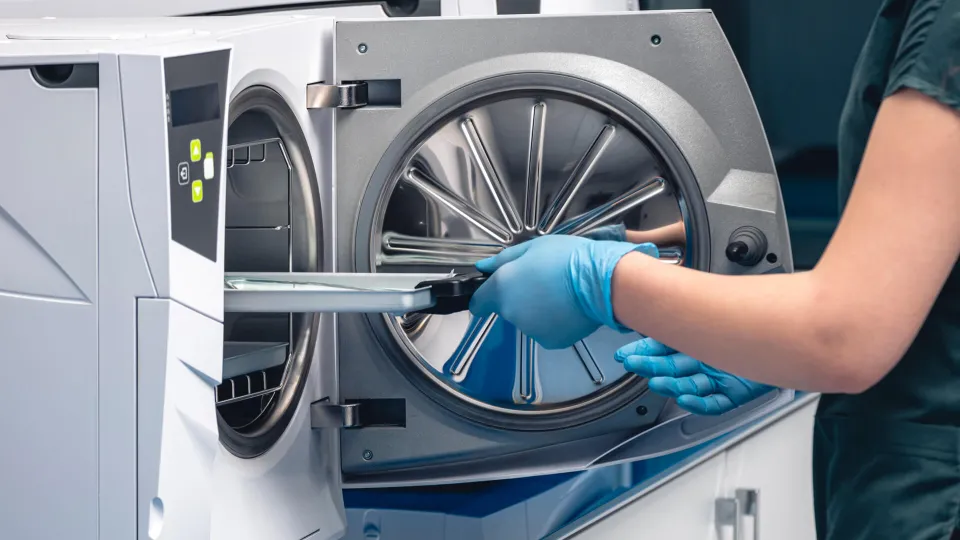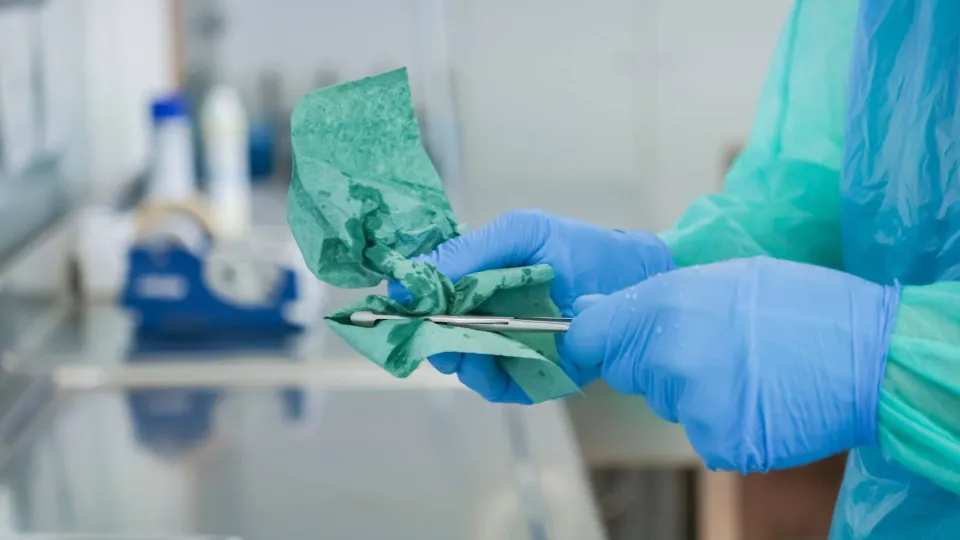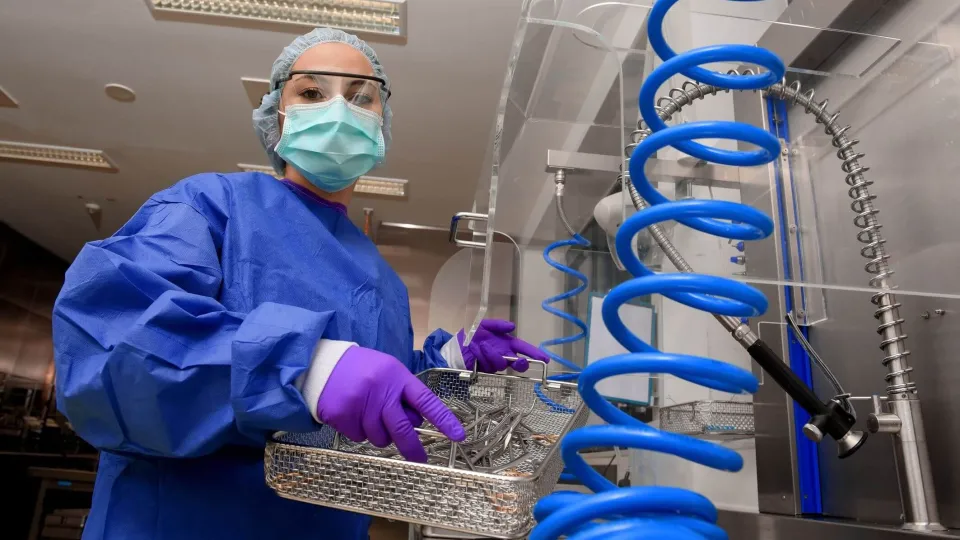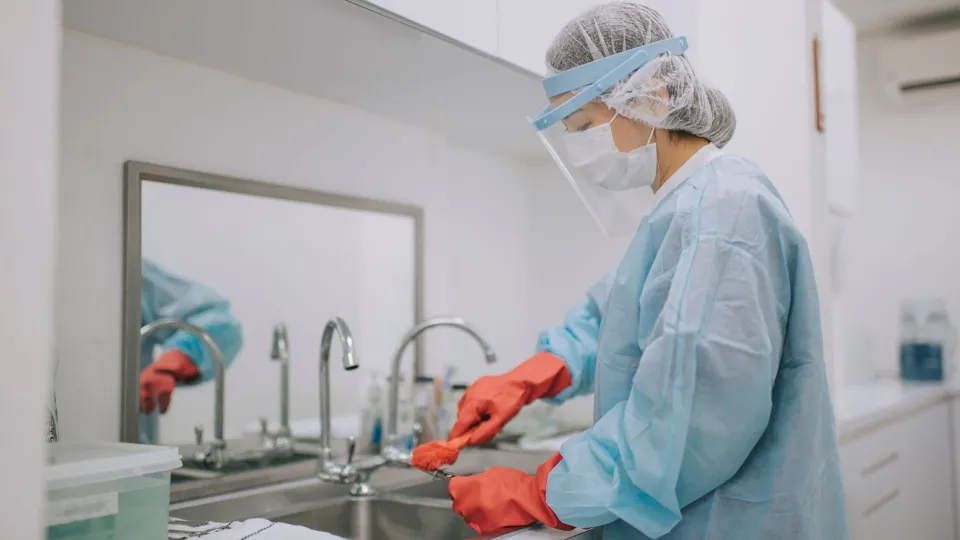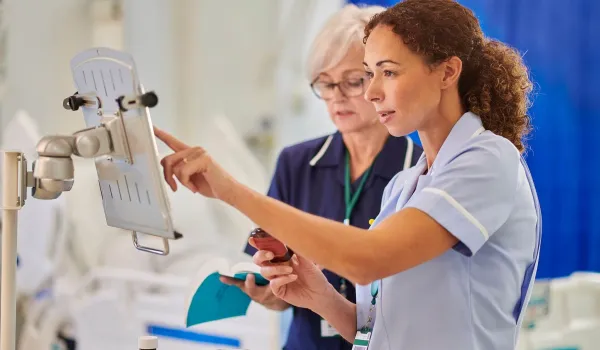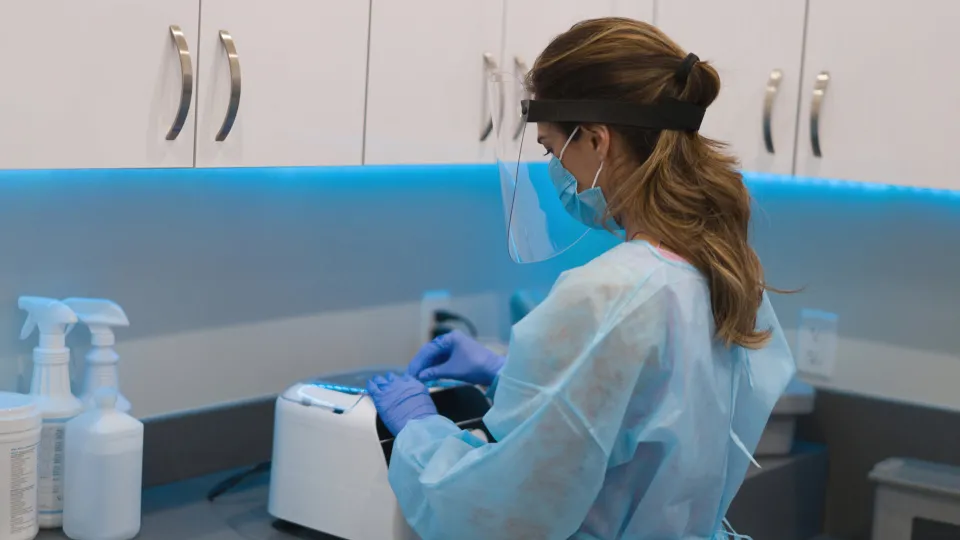
Sterile processing technicians play a vital role in the healthcare industry, keeping medical equipment hygienic so patients stay safe. They're sometimes called Certified Registered Central Service Technicians, sterilization technicians, medical equipment preparers, or Sterile Processing and Distribution Technicians. They regularly collaborate with other surgical team members and medical personnel. Successful sterile processing technicians use a broad range of skills, including attention to detail, problem solving, and healthcare skills gained through basic life support and cardiopulmonary resuscitation training. Read on to learn more about life as a sterile processing technician and the training for this role.
Job Responsibilities
Sterile processing technicians have a wide range of responsibilities, including:
- Cleaning and sterilizing surgical equipment to eradicate contaminants before, during, and after procedures
- Preparing and organizing surgical equipment for healthcare providers
- Providing the surgical team with protective accessories, including sterile gowns and gloves, before procedures
- Inspecting sterile and decontaminated medical equipment to ensure it meets hygiene standards
- Identifying pathogens in healthcare settings
- Assessing contamination risks in surgical settings
- Scheduling equipment repairs
- Storing sterilization and surgical equipment
- Transporting sterilization and surgical equipment
- Removing medical waste from surgical settings
- Safely disposing of medical waste
- Maintaining sterilization procedure records
Work Environment
Sterile processing technicians work in the sterile processing departments of various healthcare organizations. Some of the most common work environments for sterile processing technicians include:
- General, surgical, and specialty hospitals
- Surgical centers
- Dental offices
- Outpatient care centers
- Ambulatory surgical centers
- Medical laboratories
- Physicians' offices
- Pharmaceutical organizations
- Birth centers
- Endoscopy offices
- Medical instrument manufacturers
- Other healthcare facilities that need sterilized equipment
- Explaining the Surgical Team
Related: The Role of Sterile Processing in Health Care Facilities
Sterile processing technicians employed by hospitals may have a varied schedule with different shifts, including night and weekend work. Their employers may also ask them to work overtime during busy periods. Sterile processing technicians working in private medical facilities and other organizations usually have a fixed schedule. Weekend and night work is less common for these professionals. Most sterile processing technicians complete their shifts indoors in the same facility. However, there may be opportunities for travel on temporary assignments.
Interested In How To Become a Sterile Processing Technician?
Click here to explore Sterile Processing Technician Programs near you!
Working conditions for sterile processing technicians can be physically demanding, as they spend most of their shifts on their feet collecting, sterilizing, delivering, and organizing medical equipment. Occasionally, sterile processing technicians may need to move heavy objects, so they need strength and endurance. Sterile processing technicians may also be exposed to hazardous materials, including diseases and bacteria. Following workplace protocols can reduce the risk of exposure. While sterile processing technicians work behind the scenes of healthcare, their workplaces are typically fast-paced and exciting.
Education and Training
After completing high school or a GED, aspiring sterile processing technicians can enroll in a sterile processing technician program. These programs are available through community colleges, training schools, and online learning organizations. Some educational institutions ask applicants to pass an entrance exam before enrollment.
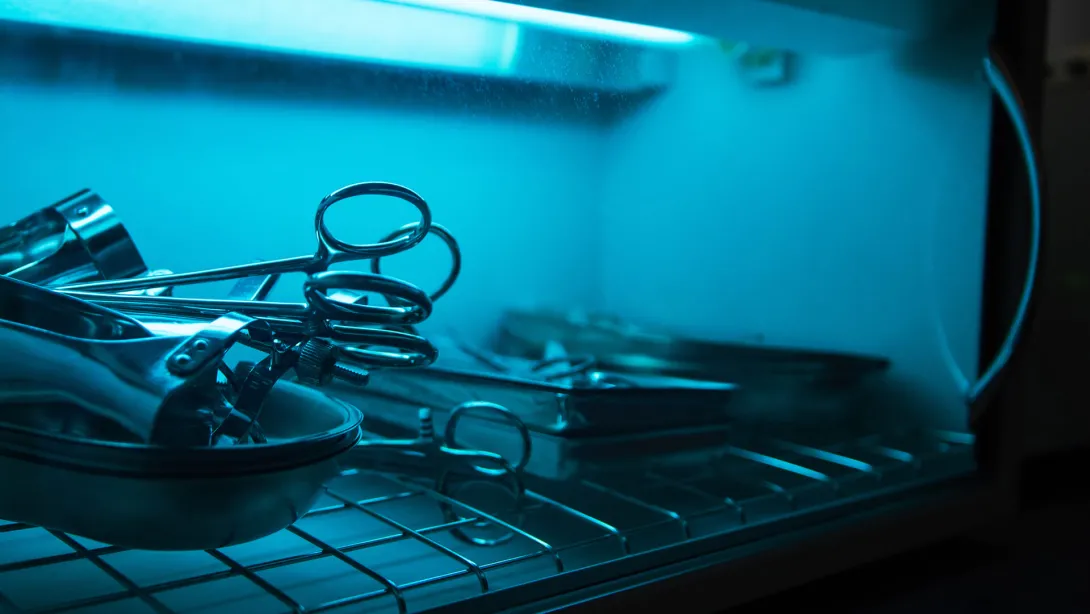
Program Duration
Completing a sterile processing technician program can take between 10 weeks and two years, depending on the course. For example, the Sterile Processing Technician Diploma available through Concorde Career College is a four-month program.
Program Topics
Sterile processing technician programs give students a foundational knowledge of health sciences and the practical and technical skills required to succeed in this role. Topics in most sterile processing technician program curricula include:
- Anatomy and physiology.
- Microbiology.
- Infection control.
- Decontamination procedures.
- Sterilization techniques.
- Medical instrument identification.
- Instrument assessment.
- Medical instrument inventory recordkeeping.
- Instrument tray preparation.
- Healthcare system fundamentals.
Additional Training
Sterile processing technicians can receive extra training through an internship. Internships provide hands-on experience in a healthcare setting. They may be part of a sterile processing technician program or organized independently.
Many sterile processing technicians also complete basic life support and CPR training. This health training may be required for some roles. Even if it's not compulsory, this training can make sterile processing technicians more desirable to employers.
Related: Why Consider a Vocational Career College
Certification
Sterile processing technicians may choose to become certified after completing their studies. Sterile processor certification is optional, but it can help sterile processing technicians find more job opportunities. Sterile processing technicians become certified after paying a fee and passing a certification exam. They must earn credits, usually through continuing education, to maintain their certification. There are two main entry-level certifications for sterile processing technicians:
Career Outlook
The career outlook for sterile processing technicians looks positive, with annual job growth of 6% forecast through 2033 for medical equipment preparers including people with this title. This is faster than the average growth rate for all occupations. The projected job growth equates to roughly 4,000 new sterile processing technician job openings every year within this period. This rapid growth also makes working as a sterile processing technician a stable job choice. Gaining certification, especially advanced specialist certification, can help sterile processing technicians stand out from other applicants and secure new opportunities.
Skills and Qualities
Sterile processing technicians rely on a combination of technical and soft skills during their shifts. Successful sterile processing technicians have the following skills:
- Understanding of infection control: Sterile processing technicians apply a thorough knowledge of infection control principles and procedures to keep their working environments sterile and minimize the risk of outbreaks.
- Collaboration: Being able to collaborate helps sterile processing technicians work efficiently with other members of the surgical team.
- Written and verbal communication: Sterile processing technicians use their communication skills to give medical teams status updates, liaise with equipment repair professionals, and maintain sterilization procedure records.
- Attention to detail: Sterile processing technicians need to be attentive to details to ensure they complete all sterilization processes and make sure equipment is safe for patients.
- Problem solving: Sterile processing technicians rely on their problem-solving skills during emergencies and other unforeseen events.
- Basic healthcare skills: While sterile processing technicians don't normally care for patients, they may rely on fundamental healthcare skills, including basic life support and CPR, during an emergency.
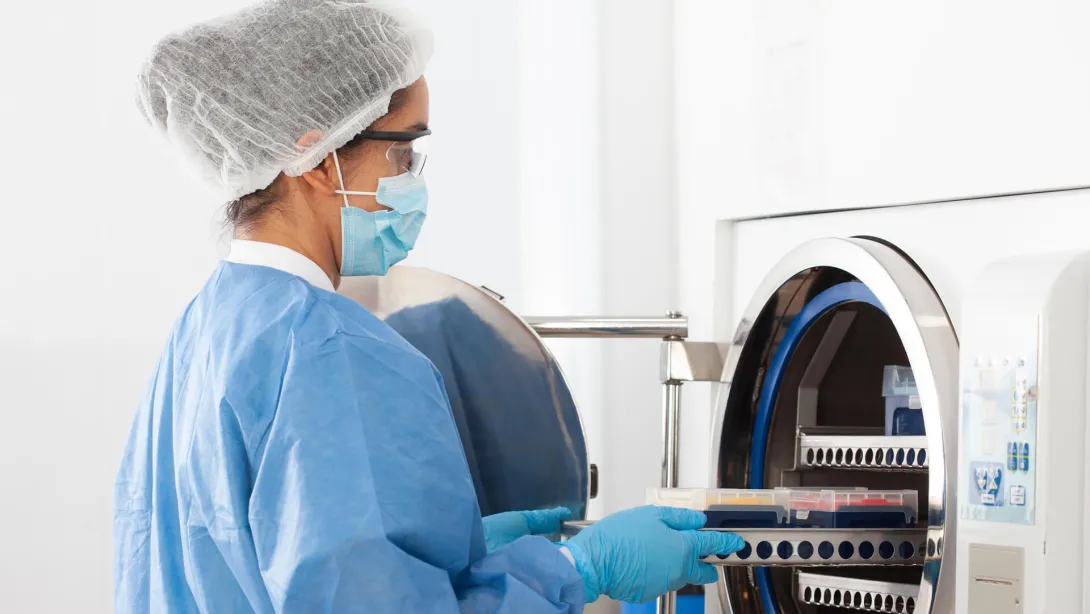
Advancement Opportunities
While some people work as sterile processing technicians throughout their careers, others use this as an entry-level position. Some of the advancement opportunities for sterile processing technicians include:
- Sterile processing supervisor/manager: Oversees the entire sterile processing department, including its employees and resources.
- Surgical technologist: Prepares the operating room before surgical procedures. Further education, including an associate degree, is required.
Continuing education and professional development opportunities can help sterile processing technicians increase their knowledge and skills to prepare them for career advancement. Participating in education and professional development is a requirement for maintaining optional certification. Many motivated sterile processing technicians earn more continuing education credits than they require to maximize their learning and advancement potential.
Related: Sterile Processing Technician Training: Your Path to a Healthcare Career
Conclusion
Becoming a sterile processing technician is a good way for people to make a difference in the healthcare industry, as these professionals play a vital role in infection control and patient safety. Job opportunities are strong and growing, so this role is an ideal option for anyone seeking a stable entry-level position. The role can be physically demanding and repetitive, with limited patient interactions and the potential for exposure to hazards.
Training to become a sterile processing technician requires as little as four months and opportunities for career growth are varied. To secure one of these essential roles in the healthcare sector, take the first steps and explore the Sterile Processing Technician diploma program with Concorde.
"Key Skills Required for Sterile Processing Technicians," Orion Allied Healthcare, https://www.orionallied.com/blog/key-skills-required-for-sterile-processing-technicians
"Sterile Processing & Infection Prevention in the ASC," Ambulatory Surgery Center Association, https://www.ascassociation.org/asca/education-and-events/virtual/courses/2024/sterile-processing-course
"It's Central Service Professionals Week – What Value Do They Provide Behind the Scenes?" 365 Healthcare Staffing Services, https://www.365healthstaffing.com/2018/10/09/central-service-professionals-value-medical-temp-agencies/
"Central Sterile Technician Salaries in the United States," Salary.com, https://www.salary.com/research/salary/position/central-sterile-technician-salary
"Sterile Processing Technician Diploma Program," Concorde, https://www.concorde.edu/allied-health-programs/sterile-processing/memphis
"Become Certified," Healthcare Sterile Processing Association, https://myhspa.org/certification/become-certified/
"SPD Technician Certification Exam C.S.P.D.T," CBSPD, https://www.cbspd.net/tech/
"IAHCSMM CRCST Practice Test," iPREP, https://www.iprep.online/courses/iahcsmm-crcst-test/
"Renew Your Certification," Healthcare Sterile Processing Association, https://myhspa.org/certification/renew-your-certification/
"Technician Recertification Packet," CBSPD, https://www.cbspd.net/wp-content/uploads/2024/01/Tech-Recert-2024.pdf
"Continuing Education Protocols," CBSPD, https://www.cbspd.net/about-ceus/
"What is Certification?" CBSPD, https://www.cbspd.net/what-is-certification/
15 "Ambulatory Surgery Technician Certification Exam C.A.S.S.P.T," CBSPD, https://www.cbspd.net/ambulatory-surgery/
"Flexible Endoscope Reprocessor (GI Scope) Certification Exam C.F.E.R," CBSPA, https://www.cbspd.net/gi-scope/
"Certified in Sterile Processing Management Certification Exam C.S.P.M.," CBSPA, https://www.cbspd.net/management/
"Surgical Instrument Specialist Certification Exam CSIS," CBSPD, https://www.cbspd.net/surgical-instrument-specialist/
"Data for Occupations Not Covered in Detail," U.S. Bureau of Labor Statistics, https://www.bls.gov/ooh/about/data-for-occupations-not-covered-in-detail.htm#Healthcare%20support%20occupations
"Surgical Assistants and Technologists," U.S. Bureau of Labor Statistics, https://www.bls.gov/ooh/healthcare/surgical-technologists.htm
"What Does Your Sterile Processing Manager Do?" Evolved Sterile Processing, https://www.evolvedsterileprocessing.com/post/what-does-your-sterile-processing-manager-do
"What is a Surgical Technologist," WebMD, https://www.webmd.com/a-to-z-guides/what-is-surgical-technologist
Take The Next Step Towards a Brighter Future
Interested in learning more about our Sterile Processing program?
We have a Concorde representative ready to talk about what matters most to you. Get answers about start dates, curriculum, financial aid, scholarships and more!

